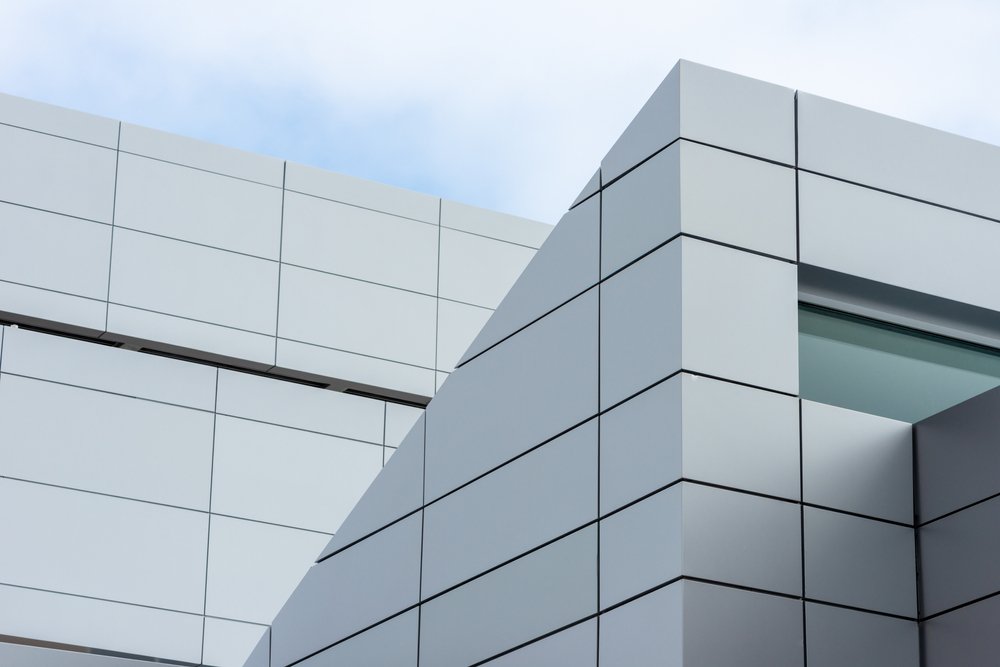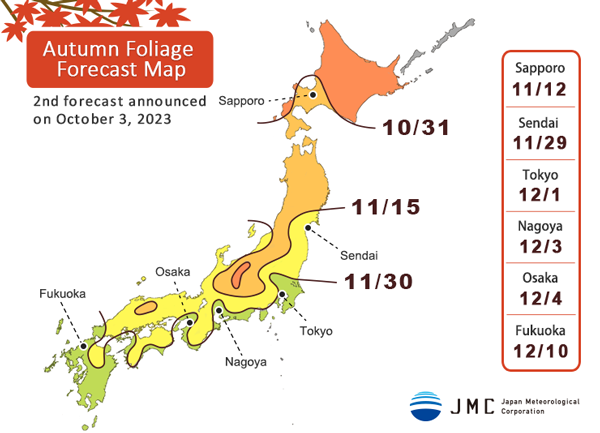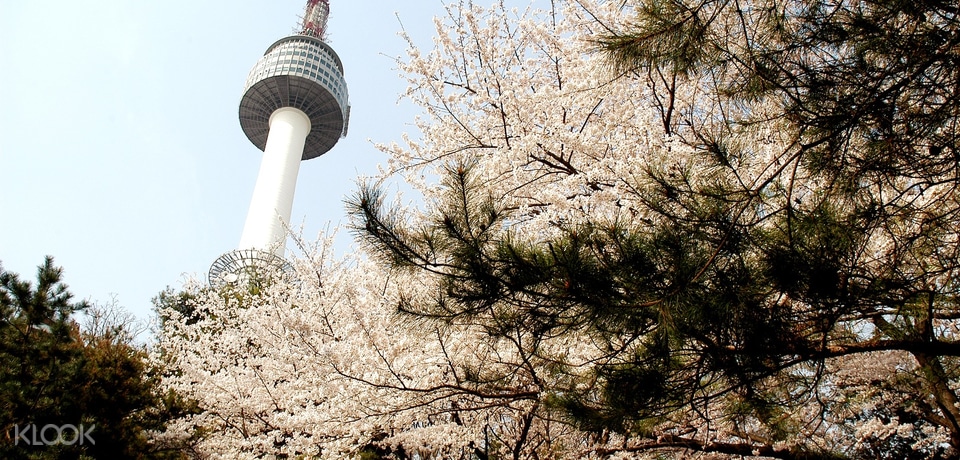Heading over to South Korea anytime soon? Follow this ultimate DIY travel guide in order to make the most of your Seoul itinerary! The post Seoul Itinerary: Ultimate DIY Travel Guide for South Korea for 5 Days (More or...
One of my recent adventures was to the dynamic metropolis of Seoul in South Korea — a bustling city that not only holds a strong presence in Asia but also in the rest of the world. To date, this influence is largely due to Seoul’s cutting-edge technology, a strong economy, and vibrant culture (I’m sure that a majority of you have encountered K-pop, K-dramas, Korean cosmetics, and Korean food among many others at least once in your life!) (Seoul Itinerary)
TRIVIA: Seoul has 25 districts (gu) that are further subdivided into 522 sub-districts (dong), and with the Han River that runs through the middle of the city, there are distinct 2 sections: Gangbuk (the northern area that’s more traditional) and Gangnam (southern area that’s more modern). But… asking for the “center” of this whole metropolitan area is a difficult thing to answer because Seoul’s districts can somehow each function like a city center itself.
It actually baffles me that I didn’t go to Seoul sooner; nevertheless, the important thing is, I’ve finally seen this city for myself, and well… I just LOVED it! I am totally smitten about how it is constantly brimming with incredible things-to-do of sorts — all of which are enough to satisfy any kind of traveler out there.
Where to Stay in Seoul?
Come and check out my list of the ‘Best Hotels in Seoul‘ which features the top recommended choices for cheap to luxurious accommodation choices PER district.
Clearly, the days I spent there were not enough and I would have absolutely loved to stay longer. And now, as I recall the vast array of activities and sights that could be done and seen, I’ve decided to whip up this comprehensive Seoul itinerary travel guide that spans 5 days/nights to help travelers (like you) to plan a trip with ease and speed.
Rest assured, the Seoul itinerary below is totally customizable to fit any number of days that you might be spending — but first, here are some important tips for your travel to South Korea!
Table of Contents
ToggleSouth Korea Travel Guide
» Quick Travel Planning
– – –
» Best Time to Visit
I suggest coming during autumn to see the amazing fall foliage, but of course, if you want to witness cherry blossom season then spring is a considerable option too.
Spring: The city becomes a hit with all the flora that start to bloom and bud. And of course, much like Japan, the city has cherry blossoms which tourists often seek. Given this demand, there tends to be a slight increase in costs, but the weather and season are quite desirable. Summer: This is arguably the peak season in the city so things get busier and costlier. It doesn’t help either that this is the vacation month of schools and Korean companies so everyone is out and about. That’s why if I were you, you should avoid these months — also because the weather can get quite humid with occasional downpours. ? Autumn: (This is the best time to visit Seoul because the weather is pleasant, prices are more affordable, and crowds are thinner. Not to mention the number of great destination must-sees for viewing vibrant leaves of autumn in South Korea. However, do take note to avoid Chuseok or Korea’s autumn harvest festival. Winter: As the temperatures drop, prices and airfare also drop. Take note though that it can get very chilly; but, supposing you’re not that sensitive to the cold, this can be a fun time given all the amazing ski resorts and festive atmosphere.Other South Korean blooms to watch out for?
See this list of the most popular spring flowers in Korea — when to see them and where to go!
ADDITIONAL TIP: Arrive and start your Seoul itinerary before the weekend. For example, if you’re visiting for 5 nights, make sure to come from Wednesday to Sunday. I say this because most places, museums, and shops close on Mondays and Tuesdays. Moreover, a lot of cosmetic stores hold sales starting on Thursdays and up to the weekend.
Dec to Feb
March to May
June to Aug
Sept to Nov
– – –
» Getting in to South Korea
International visitors typically arrive at the main airport called Incheon International Airport (ICN). To get here, I recommend browsing through Skyscanner to find the best flight deals from your point of origin. If you’re from the Philippines like me, Skyscanner also scans through budget airlines such as Air Asia and Cebu Pacific in order to find which of the 2 has the cheapest rate on the dates you choose.
?
From ICN, below are the following modes of transportation to get to Seoul…
By train. AREX (Airport Railroad Express) or ‘airport train’ connects ICN to Seoul station and Gimpo Airport, operating from 5:20AM to 12:00AM (midnight). There are 2 types of AREX, namely ‘express’ and ‘all-stop’. As the name suggests, ‘express’ is fast as it goes directly to Seoul Station (43 minutes) whereas ‘all-stop’ will arrive at 12 stations before finally arriving at Seoul Station (53 minutes). ‘Express’ tickets typically cost ?8,000 but if you purchase online, you can get it at a discount for about ?6,500~ only — and if you use code AILEEN5OFF, you’ll get an additional 5% off! Contrarily, in case you hold a Discover Seoul Pass, you can avail of one (1) FREE one-way ride.
By private transfers. If you want the utmost convenience and ease, especially without having to drag your luggage around, I recommend booking a private transfer to your hotel for only $63~ (or Php 3,300~ / ?67,000~). This works best if you’re coming together with other people so that you can share the cost and save more. Otherwise, there are taxis at the airport that charge around ?60,000 to ?90,000 depending on your destination (take note that if the taxi passes by a road toll, you’ll have to pay for it).
By airport limousine/bus or shared transfers. There are limousine buses that travel directly to major areas and big hotels in Seoul and are a great option when you’re traveling with a lot of luggage. To get a discounted rate on this at about ?14,000~ only, book with KAL or via shared transfer.
– – –
» Visa for South Korea
If you’re NOT a citizen of any of South Korea’s exempted countries, you are then required to avail of a visa beforehand. (If you’re from the Philippines, you can read my guide on how to get a South Korea visa in Manila here.)
Check full visa requirements here as per your nationality.
– – –
» Where to Stay (South Korea Accommodations)
To search for the best hotel accommodation in South Korea at the best prices, I suggest cross-checking hotel prices between Agoda and Booking.com. But if you’re rather interested in renting comfortable houses or apartments, you should search through AirBnB.
Otherwise, if you’re interested in seeing the top picks per district in Seoul, see here.
– – –
» South Korea Currency
South Korean Won (KRW / ?) wherein KRW 1,000 is equal to about USD $0.9~, €0.7~ or Php 49.00~ (this is as of May 2021). In the event that you want to exchange your money for KRW, I highly advise that you do NOT exchange your money at the airport since the rates there are not competitive.
How to best exchange your currency? Either exchange your money at a bank or at a money exchanger in your home country or in Seoul’s city center. Better yet, just withdraw from an ATM with your debit/credit card (do one big withdrawal to minimize fees with your bank). Speaking of cards, a lot of Seoul’s establishments accept credit cards but it’s always advisable to have cash on hand.
– – –
» Cost of Travel in Korea
While the cost of living in South Korea is far from being cheap, your trip doesn’t have to break the bank! To give you an idea, you should expect to travel in South Korea with an average daily cost of about USD $35~ per person on a budget, or at least $100~ if you want to experience more comfort on activities, tours, hotels, and more. (Values below show low budget to medium budget ranges).
Food: $10 to $30 USD / day
Transport: About US$1 per subway ride*
*Buy a T-Money card that saves you ?100 on all trips.
– – –
» How to Get Around Seoul
I would recommend using Naver Map (iOs / Android) for researching your day-to-day route on your Seoul itinerary because it will show in detail the fastest connections you can do (by walking, by car, by bus, and by subway). To make this work, get your own pocket WiFi or SIM Card.
You might be wondering why I am not recommending Google Maps which is the app that I typically use in my travels. Well… this is because Google Maps’ driving and walking directions don’t work in South Korea. This is mainly due to the country’s old security laws that were set after the Korean War (I guess, as a way to protect their detailed topography from North Korea).
By subway. Seoul’s metro is impressive, well-connected, and cheap. To save time and make the most of the fares during your stay, it’s best to buy a T-Money card which is basically a stored value smart card that you can recharge and use between buses, trains, and subways while saving you ?100 on all trips. You can buy this online beforehand at a cheaper rate — otherwise, it can be purchased at most of Seoul’s subway stations, newspaper kiosks, and convenience stores.
Take note that a T-money card is applicable to other locations as well in South Korea such as Gyeonggi-do, Incheon, Busan, Daegu, Daejeon, and Gwangju buses — plus Incheon, Busan, Daegu, Daejeon, and Gwangju Metropolitan Subway networks.
However, if I may give you a tip, you can actually avoid paying the cost of acquiring this card (?3,000) if you have a Discover Seoul Pass (which I will discuss in the next section below).
NOTE: Single-ride cards cost about ?1,200~ and they can be purchased on vending machines which accept coins and bills only. Reloading your T-Money Card can also only be done with cash. Meanwhile, remember that the last train usually departs by midnight (the subway does NOT operate for 24 hours).
By bus. The city also has an extensive and well-connected bus service that similarly makes use of the T-Money card. Just always remember to tap your card before exiting the bus or else you’ll be charged the maximum fare possible on that bus’ route. If you’re rather looking for an unlimited hop-on-hop-off bus to the city’s major spots, you can check this out.
By foot. Seoul technically isn’t too huge of a place and most of the city highlights can be reached by foot.
By taxi. There are various taxi types in Seoul and in order to learn more about them and their corresponding fares, read here. (It’s also possible to book an Uber car).
– – –
» Money-Saving Tips in Seoul
I advise that you purchase a Discover Seoul Pass for your Seoul itinerary because it is an amazing cost-effective card that is offered only to foreigners. To illustrate, below are the range of benefits that you can get from this pass:
FREE admission to over 33 top attractions and palaces: such as… Gyeongbokgung Palace Deoksugung Palace Changgyeonggung Palace Changdeokgung Palace Jongmyo (Royal Shrine) N Seoul Tower Observatory MBC World Seoul City Tour Double-Decker Bus COEX Aquarium TrickEye & Ice Museum …and more! Discounts on shopping, restaurants, etc.: such as… Hello Kitty Island in N Seoul Tower PooPoo Land Lotte World Adventure Eland Cruise LOTTE Duty Free …and more! T-Money function: As I’ve discussed previously if you get a Discover Seoul Pass, you’ll save on the ?3,000 cost of buying a separate T-Money card because the pass already has this function. Plus, even if this pass’ validity period has expired, you can still use it as a T-money card for buses, subway, and taxis. You only need to load it, and if you don’t use all of that load, you can refund the balance. (From my whole 5-day trip, I think I only spent ?20,000 or Php 900~ with my T-Money card, so you can use that as a basis for your initial top-up). NO WORRIES! Using your Discover Seoul Pass as a T-Money card for public transportation does NOT activate it. The Discover Seoul Pass will only activate when you first use it on its listed attractions.To get the best rate for a Discover Seoul Pass, you can purchase it online (it’s available in 24H and 48H options), and then pick it up either at Incheon International Airport or at Myeongdong’s Tourist Information Center.
TIP: The last Wednesday of each month has been designated as a “Culture Day” in Korea since 2014. During this day, participating museums, galleries, and other cultural facilities will offer FREE or discounted admissions. Examples are the royal palaces, Jongmyo Shrine, National Museum of Korea, Korean National Ballet etc.
– – –
» Staying Connected in South Korea
South Korea is said to have the fastest internet in the world (and yep, it’s true!) so you’ll be assured of great connection wherever you go. To add, most places even offer FREE WiFi — but in order to consistently stay connected online during your Seoul trip, I recommend getting your own pocket WiFi or SIM Card; otherwise, consider getting an eSIM for a hassle-free experience.
– – –
» Safety in South Korea
The Republic of Korea or South Korea remains to be one of the safest countries in the world — and also one of the safest countries for solo female travelers. Petty theft may happen but they are quite rare; so, just practice common sense at all times and you’ll be fine!
HOW TO: Find the right travel insurance for you
– – –
» Helpful Korean Phrases
English is not widely spoken in South Korea even if it is taught in a lot of schools, but you’ll have better luck in the capital of Seoul where a lot of people put time, effort and money in learning English. Nevertheless, it doesn’t hurt to learn a bit of the local language!
RELATED READ: Best translation apps for travel
Hello (formal): Annyeong haseyo
Hello (informal): Annyeong
Thank you: Gamsahamnida
You’re welcome: Cheonmanyeyo
Yes: Ye/Ne
No: Aniyo
Goodbye (to person leaving): Annyeonghi gaseyo
Goodbye (to person staying): Annyeonghi gyeseyo
Goodbye (informal): Annyeong
Excuse me (getting attention): Sillyehamnida
I’m sorry: Joesonghamnida
Is there someone here who speaks English?: Yeogi-e yeong-eoreul hasineun bun gyesimnikka?
Help!: Dowajusipsio!
Cheers!: Geonbae!
• • •
Other F.A.Q.
It is not customary in South Korea to tip, and sometimes, much like in Japan, they consider it as an insult so tipping is not recommended at all. In hotels and some restaurants though, you will sometimes see a 10% service charge on your bill.
South Korea typically uses type F (two round pins). The country operates on a 220V voltage and a frequency of 60Hz.
Please check their latest travel advisories page for more details.
All visitors to South Korea must have a passport that is valid for at least 6 months after the period of their intended stay (as well as have 2 blank pages).
There is and you can easily claim a tax refund for being a tourist; simply read this page for more info.
It is legal to fly a drone in the country but one of the top restrictions is to NOT fly above 150 meters and if your drone is more than 250 grams, it needs to be registered. For more info, see here.
• • •
Seoul Itinerary Guide
Take note that the 5-day Seoul itinerary below does not take into account your arrival day in Seoul — at any rate, if you’re staying longer in the city, you can make use of the last tab called ‘Extra Days‘ to see the other activities or trips you can do for filling up the rest of your vacation days.
TIP: It’s best to arrive and start your Seoul itinerary trip before the weekend. So for example, if you have 5 whole days, make sure to arrive on Tuesday and then start your whole tour from Wednesday to Sunday. I say this because most places, museums, and shops close on Mondays and Tuesdays. Moreover, a lot of cosmetic stores hold sales starting on Thursdays and up to the weekend so it would be a good idea to take advantage of that.
NOTE: The following section is in a tabbed format; so, in order to see the next day’s contents, just click the headings below.
DAY 1: Explore and enjoy Korean culture in a hanbok!
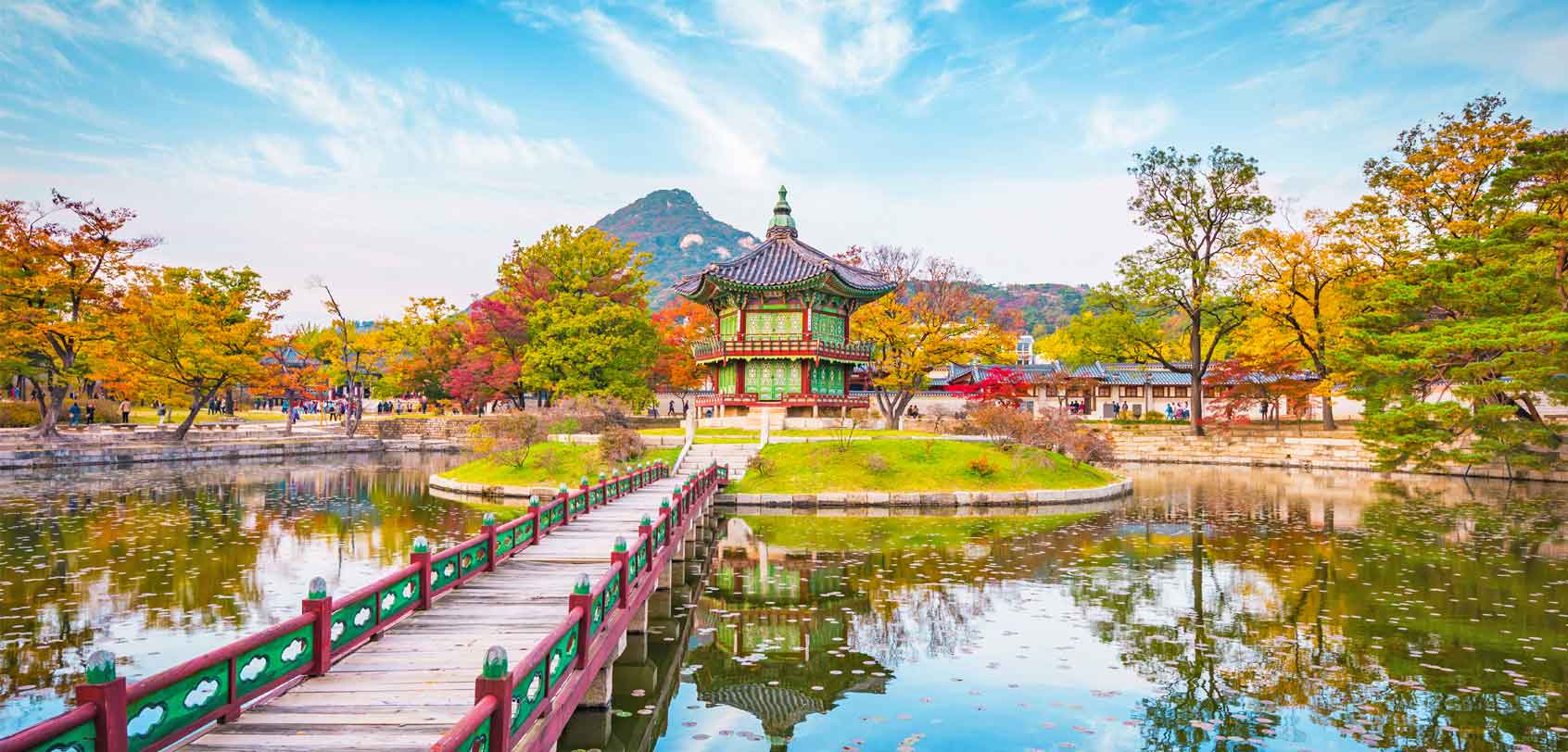
Photo by: Shutterstock
?? Rent a hanbok and explore some of Seoul’s cultural highlights
(Nearest subway station: Gyeongbokgung Station, Exit #4) You must never leave the city without trying on the elegant Korean traditional clothing called ‘hanbok’! Much like how Japan has kimono rental shops, South Korea has hanbok rental shops for tourists. Through these places, you can borrow and wear hanbok for a day (or more) whilst you venture out to the cultural spots in Seoul to snap wonderful photos.
This is certainly a MUST-do activity in your Seoul itinerary because aside from the fact that you can have the chance to feel as though you’ve been transported back to the Joseon period or to a set of an old K-drama, the experience itself is also supported by the Koreans as a part of promoting their history (so yes, it’s one way of immersing yourself with their vibrant culture too). And if those reasons are not enough, wearing a hanbok grants you FREE entry to the palaces in the city!
TRIVIA: The term ‘hanbok’ literally means “Korean clothing” but it just basically refers to the traditional clothing for both men and women from the Joseon period.
There are a LOT of hanbok rental shops in Seoul but if you want the best, I highly recommend renting with Seohwa Hanbok. Apart from its prime location, it has more intricately-designed hanbok garments that are set at an affordable price! For a more comprehensive guide on this, read my ‘Hanbok Rental‘ post here.
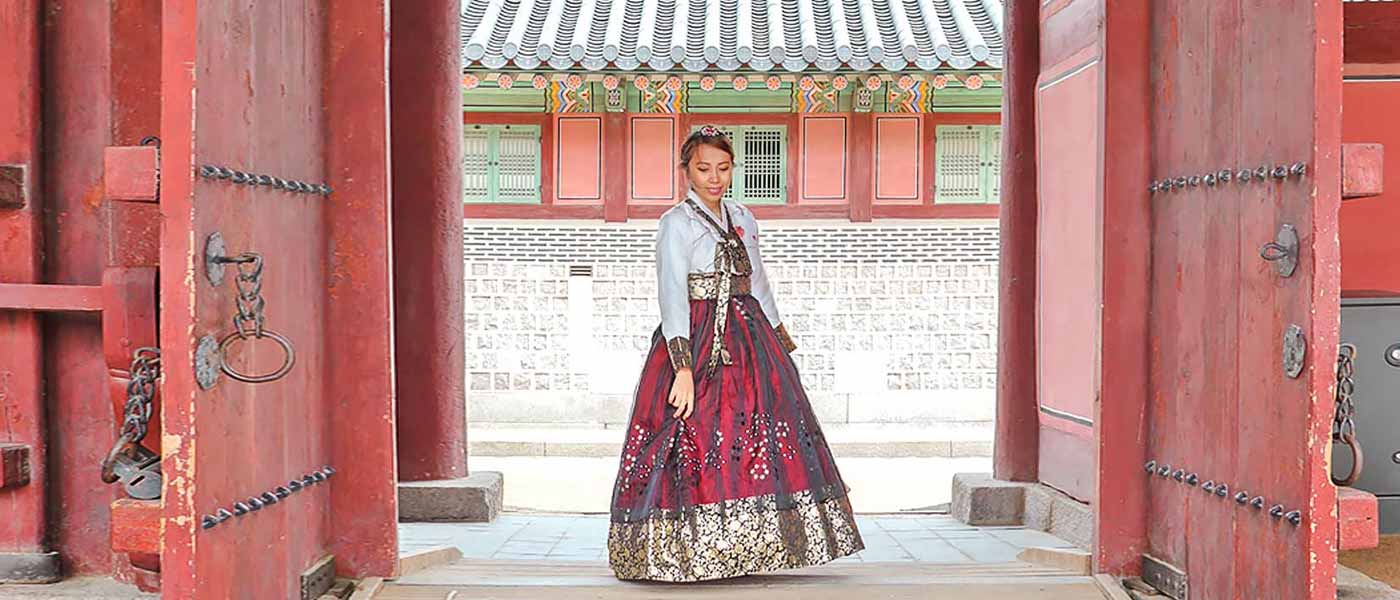
As you would see on the online booking platform, Seohwa Hanbok has 3 rental options: 4 hours, 1 day, or 2 days.
NOTE: If you have purchased the Discover Seoul Pass (no matter if it’s the 24H or 48H option), it’s preferable that you do NOT activate it on this day because you’ll already be given FREE entry to 4 of the ‘Five Grand Palaces’ if you’re wearing a hanbok. Not to mention that this whole hanbok activity will already likely fill up your whole day, so it’s best to activate the pass the next day.
.
Unless of course, you plan to avail the FREE hanbok rental use instead that’s under the Discover Seoul Pass’ perks. Personally, I think it’s best that you avail a hanbok rental separately for longer hours because the free hanbok rental under the pass is only for 90 minutes).
Once you are clad in a hanbok of your own choosing, I recommend doing the following route:
Visit one (1) of the ‘Five Grand Palaces’: The following 5 structures are considered exemplary works from the old Joseon period and each of these magnificent palaces is truly a sight to be seen. However, if you ask me, Gyeongbokgung and Changdeokgung are the best of the five — so, you can choose from either of these two for your Seoul itinerary visit (or if you are fast and can squeeze in some time, then doing both will be optimal). ? Gyeongbokgung: This is the closest palace to Seohwa Hanbok (it’s just a few steps away) and if you can only go to one palace during your Seoul trip, I propose going here because it is the main royal palace and also the largest of the 5 (even often called as the most beautiful too). The Changing of the Royal Guard (Sumunjang) ceremony is held for FREE daily, except Tuesdays, at 10:00AM and 2:00PM in front of Gwanghwamun or the main gate of Gyeongbokgung. If you can’t make it to these time slots, you can also witness a Guard-on-Duty Performance at Gwanghwamun gate at 11:00AM and 1:00PM or a Sumungun (Gatekeeper) Military Training in Hyeopsaengmun Gate at 09:35AM and 1:35PM. If you’ve got time, you can check out the huge golden King Sejong Statue at the nearby Gwanghwamun Square. (King Sejong is best remembered as the inventor of ‘Hangeul’ or the Korean alphabet.) ? Changdeokgung: This was the 2nd palace that was built after Gyeongbokgung and it has since been recognized as a World Cultural Heritage site by UNESCO in 1997. An interesting feature of this place is its ‘Secret Garden’ because there are only a limited number of admission slots per day that are given out. If you’re lucky, you can get the chance to go in if you want to! Deoksugung: This palace is famous for its picturesque stone-walled road (which is often featured in K-dramas like Goblin). And much like Gyeongbokgung, Deoksugung Palace has a Changing of the Royal Guards Ceremony and it is held at 11:00AM, 2:00PM, and 3:30PM daily, except on Mondays. Changgyeonggung: This used to be the residential quarters for queens and concubines of the king, and it later became a park with a zoo and a botanical garden during the Japanese colonial rule (today though, the zoo and garden are relocated to Seoul Land). Gyeonghuigung: Located near Deoksugung Palace, this site served as the secondary palace for the king in the latter half of the Joseon period. For a time, Gyeonghuigung was of considerable size but most of its major structures have long been disassembled and moved to other parts of Seoul.. Visit Bukchon Hanok Village:(Nearest subway station: Anguk Station, Exit #2) Not too far away from Gyeongbokgung and Changdeokgung palaces is this village that is home to hundreds of traditional Korean houses or ‘hanok’ that date back to the Joseon Dynasty. With this in mind, this makes for a great place to visit with your hanbok attire during your Seoul itinerary. To get here, look for Bukchon-ro street. It will be hard to miss because the tourism board had recently appointed staff there in red clothing to help tourists and distribute maps. Basically, there are 8 major viewpoints to see in Bukchon Hanok Village and those that you must NOT miss are the Gaehoe-dong areas that are typically appointed as Views #3 to #7. If you’re coming with elderly companions, take note that there are a few uphill climbs in this area. Unlike other hanok villages (like Namsangol Hanok Village), Bukchon was not built for tourists as it is rather a residential village inhabited by Seoulites. Therefore, make sure to keep quiet so as not to disturb the locals. As you leave Bukchon, drop by the nearby neighborhood of Ikseon-dong. Much like Bukchon, it’s one of the oldest hanok villages in Seoul; but in case you want to escape the crowds, it would be a great idea to explore this hidden gem!
. Lunch: You can either have it at Bukchon Hanok Village or at Insa-dong. There are a lot of cafes and restaurants in these areas so you won’t have a difficult time picking a place; though if I may put in my two cents, do check out Jokagbo at Bukchon (across the street near the entrance to the village) or Gogung at Insa-dong for their bibimbap (mixed rice bowl). For other food or restaurant options, click the “Extra Days” tab on top of this section — or go to this link to see a list of restaurants that you can book online at special deals.
. Drop by Insa-dong: (Nearest subway station: Anguk Station, Exit #6)As you make your way to the last stop of this route, you must not skip on the neighborhood of Insa-dong in the Jongno-gu district of Seoul. After all, its streets are one of the best places in Seoul when it comes to culture and crafts (perfect for souvenirs!). If I may also share another tip, try to stop by Ssamziegil which is a unique building wherein each of its levels is connected in the form of a spiraling walkway!
. (OPTIONAL) Visit Namsangol Hanok Village: (Nearest subway station: Chungmuro Station, Exit #3)Located at the foot of Namsan, this village was built to feature 5 traditional houses of different social classes from the Joseon era, all relocated to this spot from different locations in Seoul in order for guests to understand the daily lives of its past people. Of all these 5 houses or hanok, only one is open to the public which is the house of Yoon-ssi of Okin-dong. It has been transformed into ‘Yoon’s Tearoom’ where visitors can learn about Korea’s tea culture. If you’re interested, you could join the tea ceremony program for only ?7,000. (For a list of other activities in this village, see this link).
Is it possible to just try on a hanbok for FREE?
Yes. If you hold a Discover Seoul Pass, you can wear a hanbok of your choice outdoors for 90 minutes via HANBOKNAM, or take photos with a hanbok in the indoor studio of Namsan Seoul Tower Hanbok Experience Center. However, if you do not have a Discover Seoul Pass, Korea Tourism Office’s Main HQ allows you to wear simple hanbok and take shots of yourself in it indoors.
.
Is there a service where I can just rent a hanbok indoors and have a professional photographer take photos of me?
Of course! You can book this kind of experience online for just ?15,000~ (or USD$14~ / Php 730~). It even has the option of doing outdoor shots.
– – –
?? Visit the awe-inspiring structure of Dongdaemun Design Plaza
(Nearest subway station: Dongdaemun History & Culture Park Station, Exit #2)
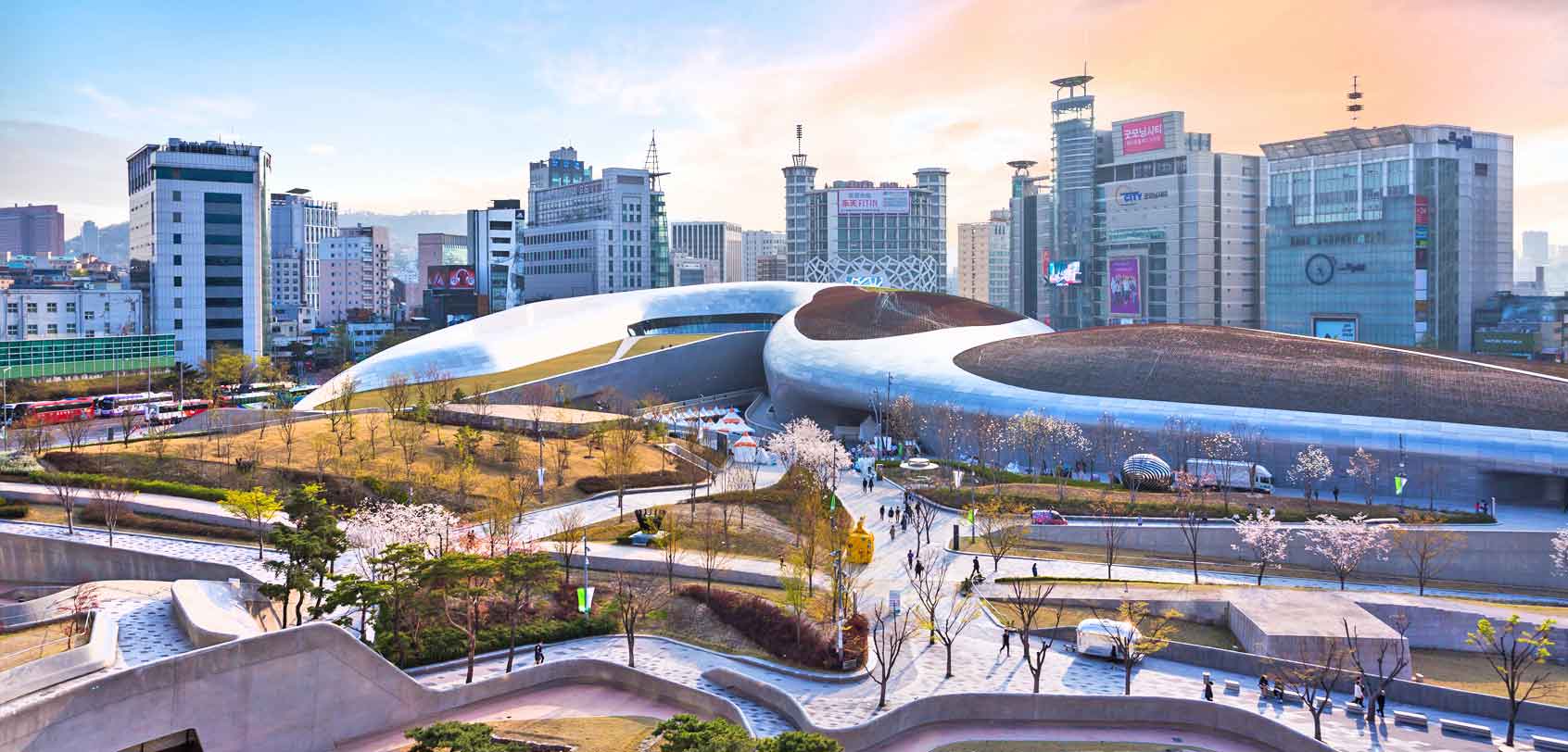
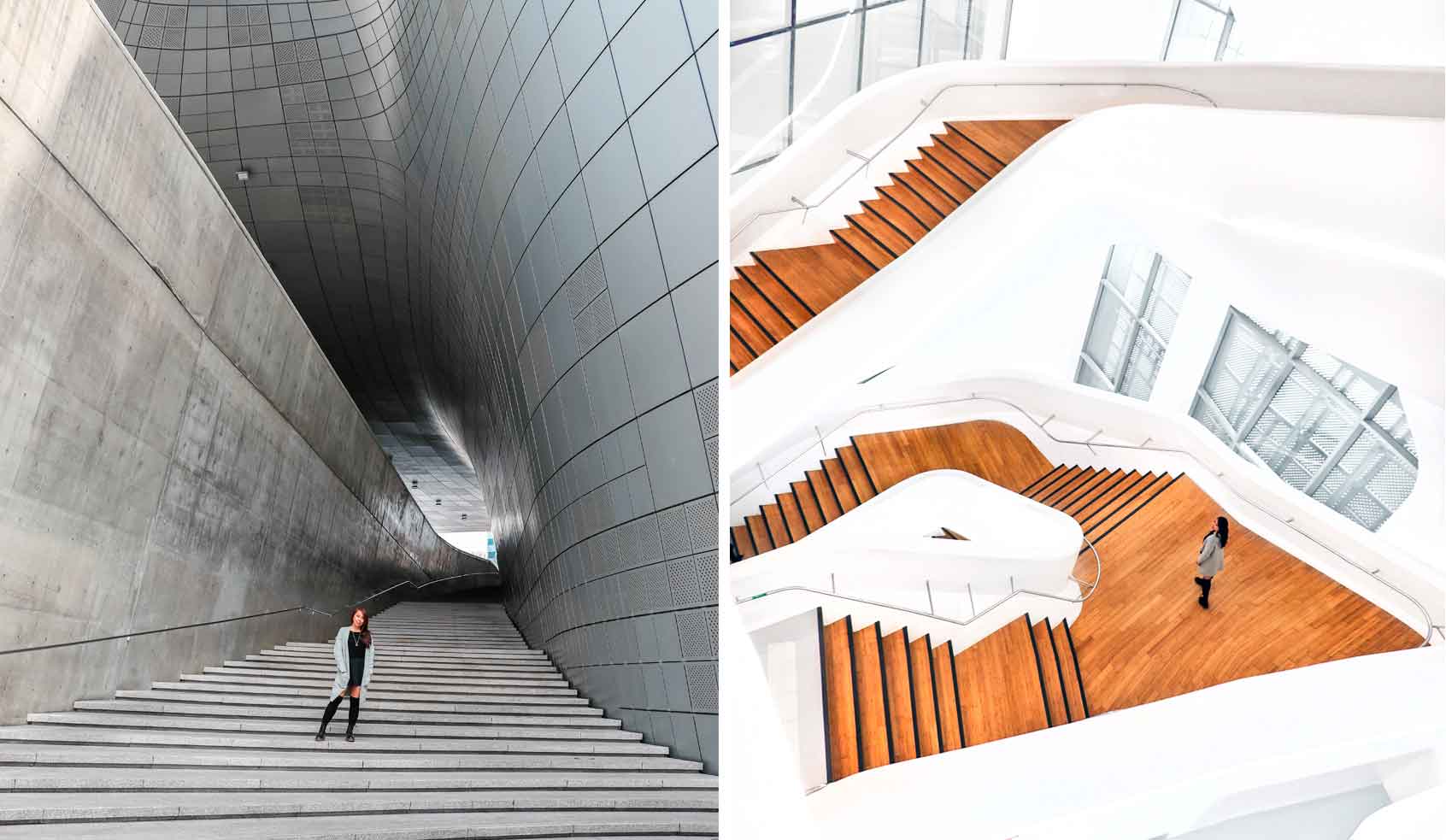
Photo by: Shutterstock
Also called “DDP”, this structure is a new major urban landmark in the heart of Seoul which has a distinctly futuristic design made by world-renowned architect, Zaha Hadid. As such, it’s not strange that it is one of the most Instagrammed locations in Korea.
Other than enjoying its grand outer architecture for your Seoul itinerary, you can also stroll through DDP’s huge 5 halls namely, Art Hall, Museum, Design Lab, Design Market, and Dongdaemun History and Culture Park — places where you can shop and watch various exhibitions, fashion shows, and performances among many others.
From late May to late October every year, Seoul Bamdokkaebi (Goblin) Night Market will open in DDP from 6:00PM to 11:00PM, so don’t forget to make a stop here to not only buy a variety of food and goods but to also enjoy the various performances made available during this event. Make sure to drop by DDP’s LED Rose Garden which is a permanent exhibition of 25,550 roses that will light up automatically once the sun sets. To get there, just go to the side of Yigansumun Exhibition Hall or simply ask the DDP guards or attendants for directions. TRIVIA: This display was first put up on National Liberation Day in 2015 which is in celebration of Korea’s 70th year of independence. Hence, the number of 25,550 comes from 365 days multiplied by 70.BONUS: If you still have some time, drop by Ihwa Mural Village, a picturesque neighborhood in Seoul that is famous for its amazing murals — as well as for its fascinating cafes and shops. It’s no wonder that a lot of K-dramas and movies have started to do their filming here. You can basically find this near Naksan Park (which also yet another hidden gem that provides great views of the cityscape).
– – –
?? Eat and shop through any of Seoul’s night markets

Photo by: Shutterstock
Like the rest of Asia, Seoul has no shortage of vibrant night markets, so for dinner, go and drop by any of the following spots (it’s best to choose only one!)
Bamdokkaebi (Goblin) Night Market: (Nearest subway station: *various spots*) Like I’ve written above, this night market opens from May to October. It originally opened in Yeouido (Yeouinaru Station, Exit #3) but has since expanded to several locations such as DDP. The other remaining places would be Cheonggyecheon Stream (Jongno5(0)ga Station, Exit #7) and Banpo Hangang Park (Express Bus Terminal Station).. Dongdaemun Night Market: (Nearest subway station: Dongdaemun History & Culture Park Station, Exit #4) Take note that this is different from the night market found in DDP. Apart from the retail haven found in this vicinity, you will also find the ‘Open market’ with its bright yellow tents, all selling various apparel, souvenirs, and items at affordable prices starting from 10:00PM up to 5:00AM. If you’re rather looking for delicious Korean eats during your Seoul itinerary, drop by Mukja Golmok (“Let’s Eat Alley” at exit #8 of Dongdaemun Station) to feast on snacks like tteokbokki (rice rolls).
. ? Myeongdong Night Market: (Nearest subway station: Myeongdong Station, Exit #7)Even if this is not one of those ‘traditional’ night markets, it remains to be a popular destination for travelers as it is set in the bustling shopping district of Myeongdong that holds some of the biggest stores like Lotte and Shinsegae as well as cosmetic brands of all kinds. Starting from 5:00PM and onwards, you will start to see food stalls filling up the main street with fares like gyerangbbang (Korean egg bread), dak-galbi (spicy stir-fried chicken), etc.
. ? Namdaemun Night Market: (Nearest subway station: Hoehyeon Station, Exit #5) Open from 11:00PM till 4:00AM, this traditional night market is the largest in Seoul and it holds every possible thing that you can think of — from food to clothing, they have it all!
. Gwangjang Market: (Nearest subway station: Jongno 5(o)-ga Station, Exit #8) If Namdaemun is the largest, then Gwangjang would be the oldest in Seoul, making it a common go-to place for many Korean shoppers. You can actually find this close by Dongdaemun and DDP so it’s possible to check off several of those night markets in the same night if you will it so! (TIP: This place is best if you’re looking to buy a hanbok for yourself).
. ? Noryangjin Fish Market: (Nearest subway station: Noryangjin Station, Exit #1) Operating 24 hours a day, this place is more than just a night market. If you come in the early morning, you can witness a bustling fish auction (reminiscent of Japan’s Tsukiji Fish Market). Anyhow, the fun part about this place is that you can buy some fresh seafood and then have it cooked by a restaurant located on the 2nd floor — and if you’re brave enough, maybe you can try the infamous Korean activity of eating a LIVE octopus?
TIP: Want a hassle-free foodie experience? With the help of a local guide, you can join a Korean Food Walking Tour or a Korean Night Dining Tour.
– – –
?? Watch the famous Nanta Show
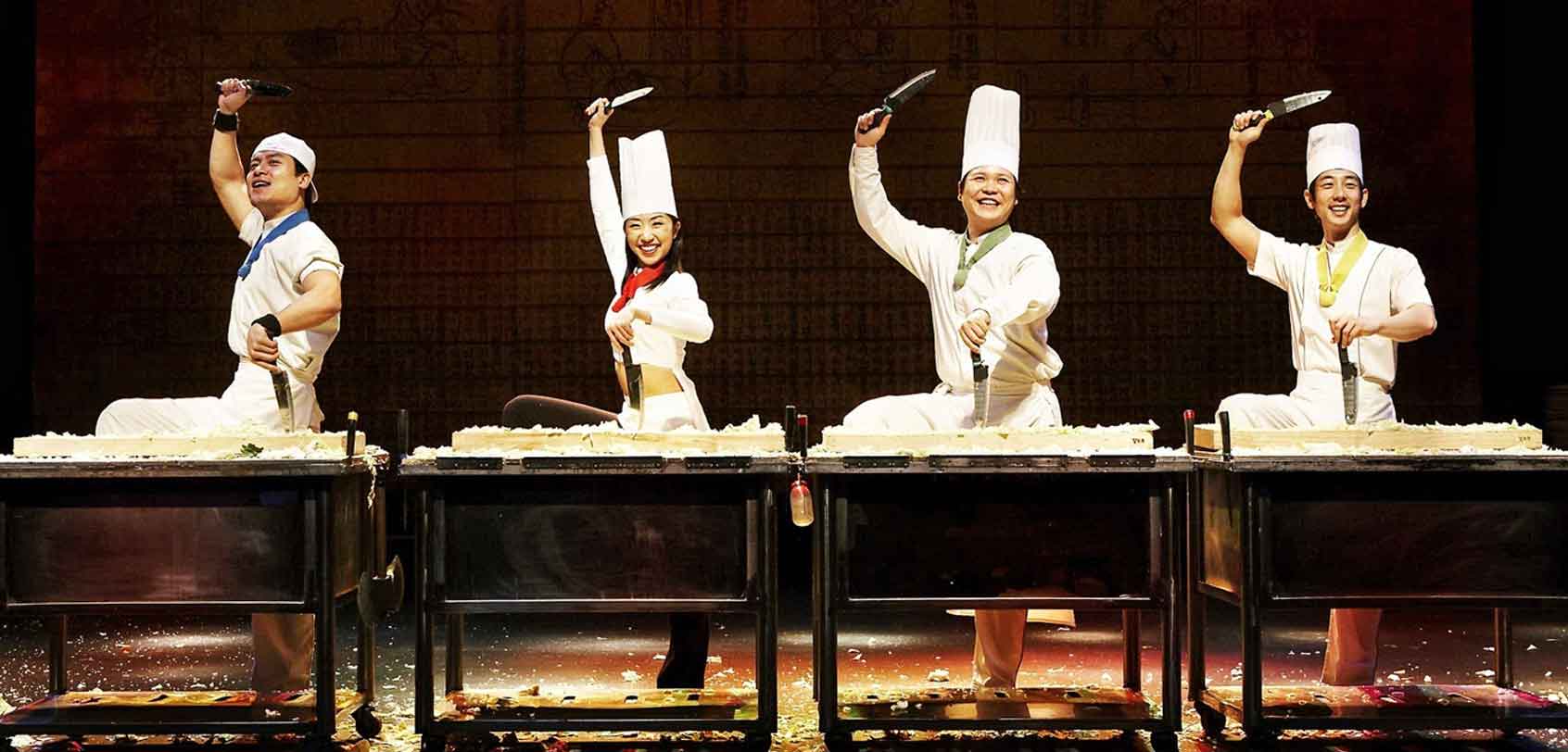
If there’s one show that you should NOT miss for your Seoul itinerary, it will be witnessing the award-winning long-running NANTA Show at Myeongdong Theatre. This is basically a non-verbal comedy show (so it’s fine even if you don’t know Korean) that incorporates traditional ‘samul nori‘ rhythm (which is a genre of percussion music distinct to Korea) as they do a slapstick play that mimes the story of cooks who are preparing for a wedding.
I’ve seen this show myself and it was quite entertaining as I saw knives fly and fire blasting from pots — but don’t worry, it’s all safe! But I must say that it did have a distinct sense of humor that may or may not work for you. Either way, it’s an energetic performance that has garnered distinctions and awards from Edinburg Fringe Festival and on New York’s Broadway, so I say: give it a try!
NEAREST SUBWAY: Myeongdong Station, Exit #7
BOOK: Online to get 30% off on tickets
• • •





